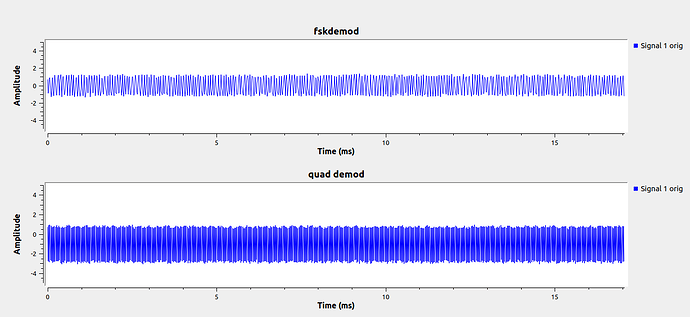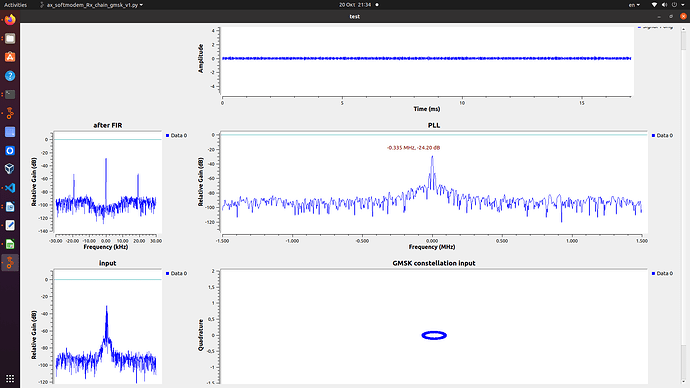Hello,
I am trying to build a GMSK transceiver to communicate with the AX-2150 from GomSpace, using an ADALM-PLUTO. I have built the following flowgraph in GNU Radio, which works fine when the input comes from recorded transmissions.
However, when I tested it with live transmissions from the AX-2150, the packets are not being demodulated properly. I noticed a DC component in the signal after the Clock Recovery MM block, so I added a DC blocker, but I still observe some amplitude variations. Could these variations be the reason for the faulty demodulation? Any GMSK receiver I’ve found online has a very similar flowgraph to mine.
Additionally, regarding the transmission from the PLUTO, I am transmitting with 0 attenuation, and the distance between the Pluto and AX-2150 is about 3 meters. However, the AX-2150 is not receiving anything. Could it be that the transmit power of the Pluto is too low to reach the AX-2150’s antenna?
Can anyone suggest what I should change to achieve proper demodulation or improve the transmission?
Thanks in advance!!!
ax-softmodem_TX_Rx_chain_gmsk_20241010.pdf (35.6 KB)

